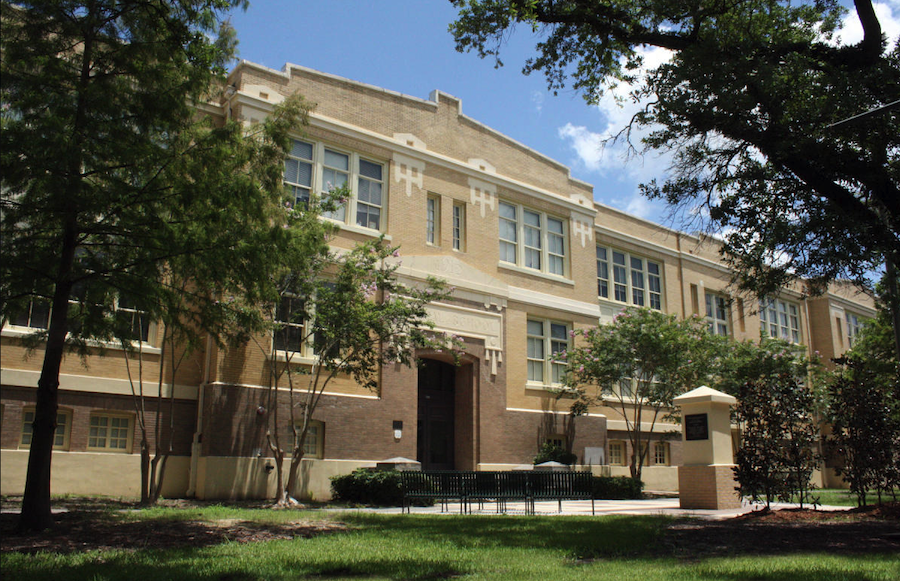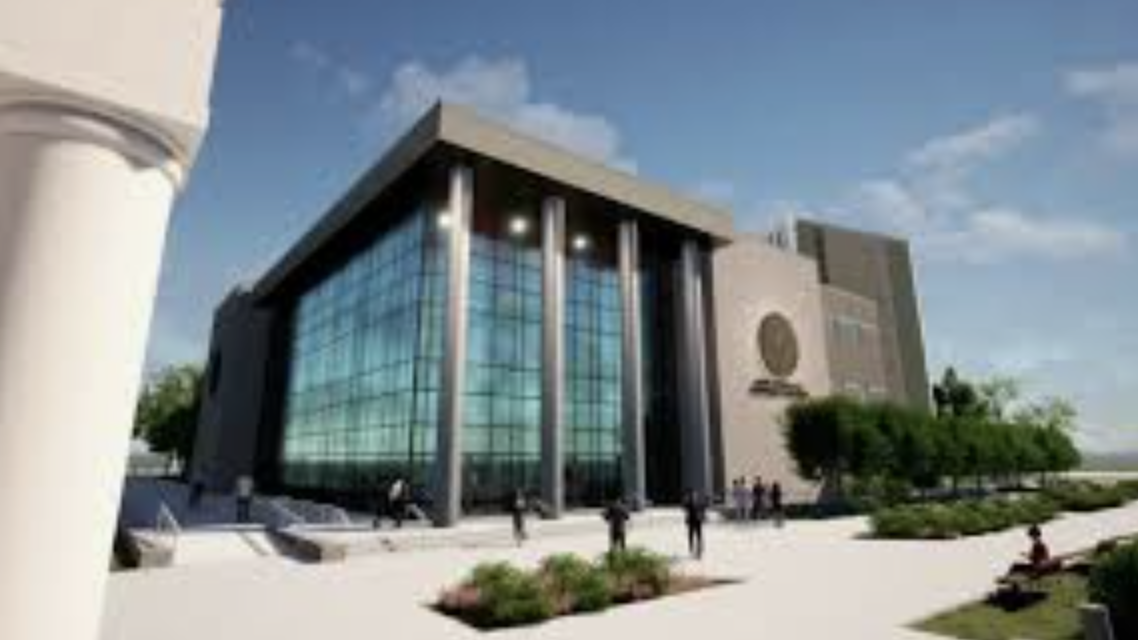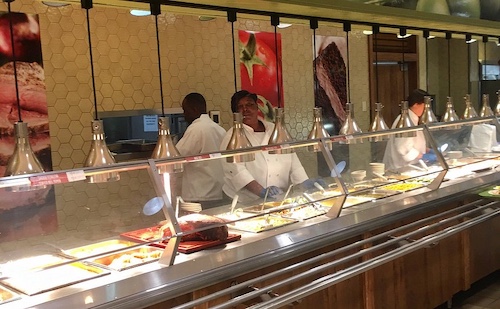Renewed sense of purpose: Arts and Humanities Council ready to unveil rebrand
Published 7:03 am Sunday, July 20, 2025

- The Central School Arts & Humanities Center was designed and built by noted New Orleans architects “Favrot & Livaudais” in 1912 and is located at the heart of the Charpentier Historic District. The center is home to The Arts and Humanities Council of Southwest Louisiana. (Photo courtesy of Visit Lake Charles)
The Arts and Humanities Council of Southwest Louisiana is in the midst of a transformation.
Under new leadership and driven by a renewed sense of purpose, the organization is preparing to unveil a rebrand aimed at better supporting artists, strengthening the creative economy, and ensuring art remains an integral part of everyday life across the region, Executive Director Lee Ann Stenvick told the American Press earlier this week.
As the “advocates for the region’s creatives,” the Arts and Humanities Council of Southwest Louisiana works to support the arts — as well as artists themselves — in the five-parish region.
Trending
The Arts Council serves as the hub for more than 60 nonprofit arts organizations, as well as countless artists, in the five-parish region. The support and grant funding the council provides affects nearly every museum, exhibition or arts event in the area.
The annual festivals and initiatives conducted by the arts council not only brighten the community, but also spur economic prosperity.
Stenvick is the new executive director of the council, and she entered her role in April. She is looking to drive the mission of the Council forward, while sharing her passion for the arts with Southwest Louisiana
With a background in theater and over a decade at the LSU Foundation, Leanne brings both creativity and development experience to her new role. She moved to Lake Charles two years ago with her husband, who is a theater professor at McNeese State University.
Her journey, one that began with a love of storytelling and deepened through motherhood, fuels her mission to bridge gaps between the artistic community and sustainable funding. The position offers her an opportunity to work in a sector that intersects her two areas of expertise — and a sector where she can create a better world for her daughter.
“I kind of sat there postpartum and thought, ‘What do I want to do with my life to make her proud?’ And I thought that was perfect,” she explained. “It felt like the right moment.”
Trending
Through her work at the council, she hopes to dispel general misconceptions about artists and art.
Louisiana is culturally and artistically rich, a resource that attracts $18.1 billion in tourism to the state annually, Stenvick said.
“Sometimes people think art is just paintings in a museum. And that’s not it. It’s the beading, the beadwork that goes into Mardi Gras Indians’ costumes. It’s the floats. And that goes into your community theaters in town,” she said. “It’s everywhere we look. And it’s where we turn to when we’re in our deepest, darkest times. When we have a bad day, we play our favorite song. Or we read our favorite book. Those are all forms of media and art. And if those creatives had not been cultivated, you would not be able to enjoy that.”
And aside from the number of tourists who come to Louisiana to “feed the soul,” the art industry is a job-creating economic machine. The sector creates 55,000 jobs in Louisiana and is a $7 billion industry, separate from tourism.
But while the arts boost the state’s economy, the benefits are sometimes overlooked, she said.
“I think people see it as frivolous, because they don’t make the correlation that this is an industry here. That this is a viable way to earn a living, as well.”
This can make it difficult for the arts to secure funding on the state and federal levels. Compared to the surrounding states, Louisiana’s arts funding is not up to par, she said. Louisiana funds the arts at $0.46 per capita, while states like Mississippi ($3.57 per capita) and Florida ($2.46 per capita) allocate more than triple that.
“I mean, if you see what we do, $0.46 per capita, it’s $18.1 billion in the tourism industry. … What could $1 per capita do?”
The Arts Council itself is funded through the Louisiana Division of Arts (LVOA) — which is funded by the National Endowment of the Arts (NEA) as well as corporate, industry and municipal partnerships.
LVOA receives $1.1 million from NEA annually, which is then dispersed evenly among Louisiana’s nine regional arts councils. This funding supports the arts council’s grant programs and general operating costs.
Despite hiccups at the federal level, Stenvick is “nauseously optimistic” about the NEA’s decision to fund state partnership grants for this year.
“It was a little nerve-wracking for a while. … It means now the fight for next year begins,” she said. “We’re still working on advocacy and making sure that our lawmakers and our legislators know the impact that that funding, which is 0.003% of the federal budget, will have here in southwest Louisiana.”
New directions
The council is currently crafting a new mission, vision, and values hand-in-hand with the community. A recent forum brought together nearly 60 local creatives, with another 30 contributing via public survey.
There, locals pinpointed 11 values that will guide the arts council to their new direction: collaboration, preservation, accessibility, inclusion, representation, innovation, creativity, excellence, storytelling, authenticity, and stewardship.
With a fresh perspective and “tangible action items,” the arts council has been planning a rebrand that will be released in the fall.
A new era deserves a celebration, and Chuck Fest will provide just that on Oct. 18, she said.
Before that, the reimagined Gallery Promenade, now named “White Linen Night,” will bring pop-up art markets, cocktails, and performances to downtown Lake Charles on Sept. 6. Other council-supported events include the Spring Art Walk, Holiday Art Market and the Live at the Lakefront series.
“I am so energized in a way that I’ve never been before because this area is rife with talent, and it is so hungry for more,” she said. “I have loved meeting people from here, not originally from here. It’s been a blast to hear about all of the different creative little corners that we have in this region.
“Now it’s my job to bring them all together and get everybody on the same page.”
As the arts preserve local culture and support the economy, the community can support the arts, artists and arts councils through advocacy, and just by showing up.
Those who want to support the arts council directly can become a member through the “337” campaign, which is accessible on the council’s website. But one of the most effective ways for locals to buy season passes or memberships to their local arts organizations.
Support can also be shown by contributing to fundraising campaigns. She highlighted a recent opportunity — a new arts-themed license plate was designed by Lafayette artist Denise Gallagher. Fifty dollars of each vanity plate sale goes directly toward the Louisiana Partnership for the Arts, which supports advocacy efforts, such as creating the arts caucus in the state house and state Legislature.





